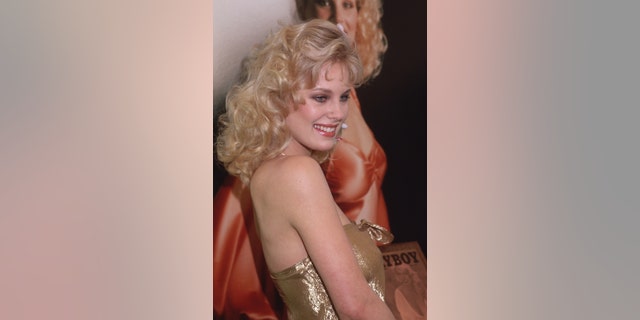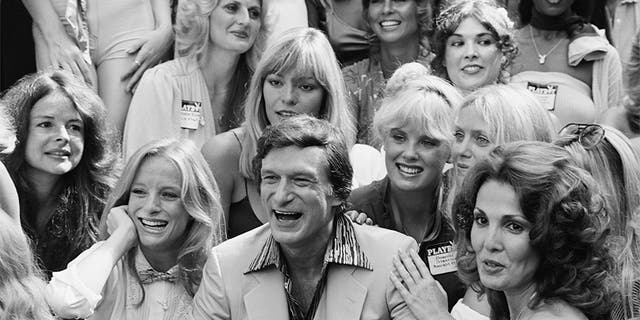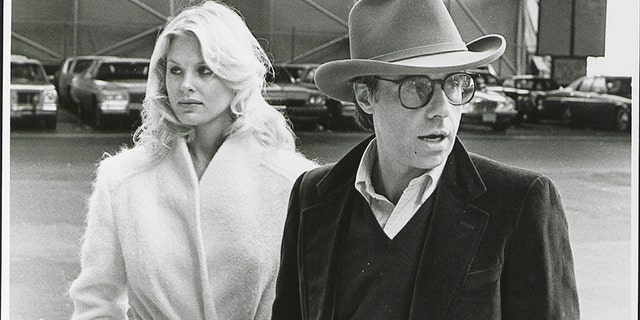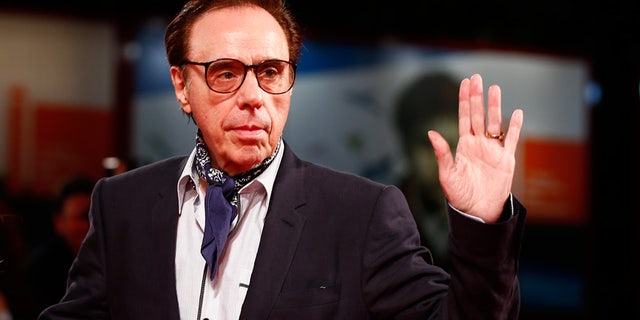Their pal Dorothy Stratten had gone to the Los Angeles house she once shared with estranged husband Paul Snider to negotiate a settlement as part of their divorce. Cushner and Laurman decided to check in on her.
After knocking and hearing silence, Cushner opened the door. Inside the two found the naked bodies of Snider and Stratten.
“It looked like it was a horror movie — a staged horror movie — like mannequins and fake blood,” Laurman recalls to ABC’s “20/20.” “That’s a picture that never goes away, a mental picture that’s stuck in here forever.”

Police said Snider, 29, had raped Stratten, 20, and then shot her in the face with a 12-gauge shotgun. The small-time promoter then turned the gun on himself.
Those who knew the couple have come forward for a new two-hour documentary airing Friday titled “The Death of a Playmate,” which analyzes the star’s whirlwind career and brutal slaying.
Cis Rundle, a former Playboy social secretary, reveals in the special that Playboy founder Hugh Hefner was deeply devastated by the murder-suicide.
“Hef was never the same,” Rundle explains. “Part of him died. Part of all of us died because Dorothy was special to us.”
Stratten was a teenager working at Dairy Queen when she was first spotted by Snider.

Teresa Carpenter, who wrote a Pulitzer Prize-winning Village Voice cover story on Stratten in 1980, says Snider was making a living as a promoter for automobile and cycling shows at the time.
“It wasn’t enough to accommodate his extravagant taste, so began to procure girls and pimp them on the side,” she explains. “He didn’t keep a low profile in that he drove a black corvette, wore a mink coat [and a] Star of David encrusted with jewels that he hung on his chest. He was called the Jewish pimp and he cultivated that.”
According to the special, Playboy hosted the Great Playmate Hunt contest in hopes of discovering a new Playmate to feature in the centerfold of its 25th-anniversary issue the following year. Carpenter said Snider convinced Stratten, then 18, to be photographed nude by a professional photographer.
Playboy quickly became captivated by Stratten’s test shots.

“[Vancouver photographer Ken Honey] sent me the pictures and… I wanted her on the next plane,” recalls Marilyn Grabowski, who worked with Hefner for over 40 years. “She was a total babe in the woods. I cannot remember another Playmate being that — I don’t want to say naïve — inexperienced, unused to her surroundings and not used to thinking that she was really beautiful.”
Despite Stratten’s beauty, the young model was noticeably shy. The January 1979 centerfold went to Candy Loving, a senior at the University of Oklahoma. However, Playboy crowned Stratten Miss August 1979. She would go on to work as a Playboy Bunny at the Playboy Club in Los Angeles. Cushner said Stratten wasn’t allowed to serve alcohol because she was still 18, but graciously greeted guests at the door.
While Stratten’s fame grew, Snider remained a constant presence.
“She was on the phone with him daily when we shot her,” says Grabowski. “She would call and tell him how great it was going … She thought that whatever success she was having — and it was embryonic at that point — was totally due to Paul. She leaned on him.”

The couple married in June 1979. Grabowski claims Hefner opposed the marriage and consequently connected Stratten with managers to help protect her assets.
Meanwhile, Stratten began scoring acting gigs in hit shows, like “Fantasy Island” and “Buck Rogers in the 25th Century.” Then in 1980, she was named Playmate of the Year.
“She was really happy then,” says Rundle. “That’s when I think it was starting to change with Paul.”
Stratten was then introduced to filmmaker Peter Bogdanovich who was newly single and spending time at the Playboy Mansion. Not only did he fall for the blonde bombshell, but he wrote a role specifically for her in his film “They All Laughed,” which also starred Audrey Hepburn, Ben Gazzara and John Ritter.

In the “20/20” special, co-star Colleen Camp said Bogdanovich confessed he was “madly in love” with Stratten.
Meanwhile, Laurman said Snider became distraught over his unraveling marriage.
“He was so sad,” she recalls. “He was like, ‘Gosh. She didn’t even tell me she loved me or kiss me.’ There were times when he talked to me and he would start crying. He would sit on the couch and play his guitar, and he had written songs to Dorothy.”
But Stratten was ready to move on. Once she and Bogdanovich returned from filming in New York, they moved in together. Stratten also met with Snider and revealed she wanted a separation.

Former Los Angeles homicide detective Richard DeAnda also shared that around this time, Snider bought a shotgun from the classified ads and picked it up on the night of Aug. 13, 1980.
“[Snider] ultimately had to do what he did, and basically — to Hefner, to Bogdanovich, [to] everybody else, to society in general — put up not one but two middle fingers and say, ‘That’s what you get for messing with Paul Snider,’” says Cushner.
Stratten was buried at Pierce Brothers Westwood Village Memorial Park — the same place as original Playboy cover girl Marilyn Monroe. “They All Laughed,” which turned out to be Stratten’s final film, was released on Aug. 14, 1981.
In 2017, Bogdanovich told Fox News he struggled both personally and professionally after the murder of his love.

“To be candid, I think I lost my mind a bit,” explained Bogdanovich at the time. “I didn’t do anything that was good for me in the long run. I just felt that I wanted [‘They All Laughed’] to get out there because of Dorothy’s murder. I didn’t trust anybody … I did it myself. I blew about five million bucks. But you can’t do that. You can’t self-distribute. You can’t go against the major studios. But it was done out of genuine affection for the film, as well as the paranoia of everybody around me.”
“I loved her dearly and deeply,” he said of Stratten. “She was kind of the inspiration for the film in a funny way … Sometimes it’s painful to watch … Sometimes I can’t take it and just get up and walk out of the room for some of it.”
But seeing glimpses of “They All Laughed” gives Bogdanovich the chance to explore one of the biggest joys from his lasting career again.
“[I miss her] wisdom, her laugh, her warmth, her beauty, her humor, her charm, her elegance [and] her empathy,” he later wrote to Fox News on Stratten. “Everything about her I miss, she had.”
Image Source:*Instagram
Source:foxnews.com








